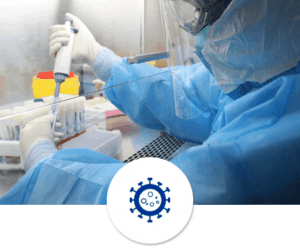Process steps of nucleic acid detection
The nucleic acid detection material is the nucleic acid of the virus. Nucleic acid testing is to find out whether there are nucleic acids of foreign viruses in the respiratory specimens, blood or feces of patients to determine whether they are infected by the new coronavirus. Therefore, once the test is “positive” for nucleic acid, it can prove that there is virus in the patient’s body. So what is the process of nucleic acid detection?
Nucleic acid detection process
1. Sampling
The first step is to take a sample. This process will cause some discomfort. The doctor will use a nasopharyngeal swab to gently wipe the deep part of the nasal cavity or the posterior pharynx (collecting exfoliated cells from the posterior pharynx) and save the specimen.
2. Keep sample
After the collection, the doctor will immerse the collected throat swab in the preservation solution and seal it.
3. Submit for inspection
Just like blood collection for physical examination, the collected samples are sealed uniformly and sent to the testing department for testing.
4. Nucleic acid extraction
Before testing, the sample is inactivated, but it does not affect the gene sequence of the virus. The sample is then subjected to nucleic acid extraction.
5. Perform testing
After the nucleic acid is extracted, perform a fluorescent RT-PCR test to determine whether it is negative or positive.

For the nucleic acid detection of the new coronavirus, first perform sample collection according to the “sample requirements” part of the kit instructions. The conventional sample types include throat swabs, nasal swabs, sputum, bronchial lavage fluid, and alveolar lavage fluid.
In fact, nucleic acid testing is mainly divided into two forms: nasal swab and throat swab. It mainly uses polymerase chain reaction to detect specific nucleic acid sequences in the viral genome to determine whether the subject is infected with the virus at the moment.
After obtaining patient samples, testing should be carried out as soon as possible. If the samples that need to be transported cannot be tested immediately, they should be packaged at low temperature according to the instructions and sent to a special testing agency for testing. After receiving the sample, the testing institution shall perform nucleic acid extraction on the sample. The nucleic acid extraction reagent shall use the nucleic acid extraction kit specified in the approved product manual.



